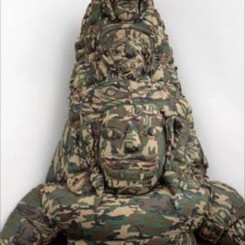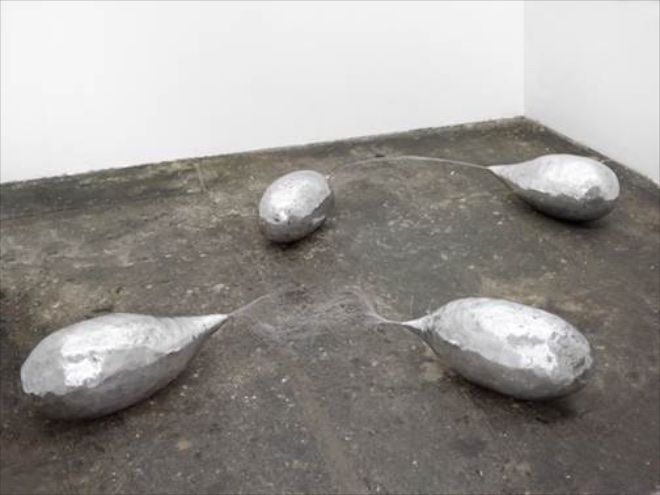Traitor and Tradition—art from Cambodia and Thailand: Mit Jai Inn, Sopheap Pich, Pinaree Sanpitak, Svay Sareth. Curated by Erin Gleeson
ARNDT Berlin (Potsdamer Straße 96, Berlin) Sep 19–Oct 18, 2014
One of the most interesting shows to open during Berlin Art Week this year was “Traitor and Tradition” at ARNDT Berlin, presenting the work of four Thai and Cambodian artists living in different cities: Mit Jai Inn (Chiang Mai), Pinaree Sanpitak (Bangkok), Sopheap Pich (Phnom Penh), and Svay Sareth (Siem Reap), curated by Erin Gleeson.
Gleeson runs Sa Sa Bassac, the only intellectually critical art space in Phnom Penh. Its curatorial standards are serious and its curiosity large, with a local perspective but international aspirations. It is also a gallery, which is the only pragmatic way to deal with difficult local circumstances in a developing country. Certainly the approach is not unusual in China (Long March Space, Beijing Commune, Vitamin Creative Space and Boers Li Gallery all began as non-profit art spaces).
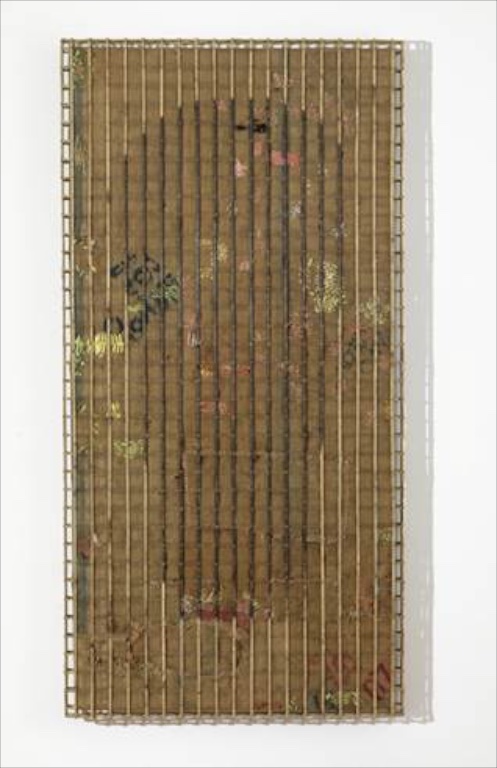
Sopheap Pich, “Old Domain”, bamboo, rattan, wire, burlap, plastics, oil based spray paint, 243 × 123 × 8 cm, 2014 (image courtesy ARNDT and the artist; Photo: Bernd Borchardt)
Referencing the curator and academic Lucy Lippard’s 1971 essay “Changes”, Gleeson set up an exhibition which played on the conflicts and contradictions of society, politics and art in two countries—Thailand and Cambodia—outside the international art world colossus. Many will have heard of Cambodian artist Sopheap Pich, whose sculptural works are relatively well-travelled. The constructions derive from traditional Cambodian woven basket fishing-traps. The exhibition work was less obvious than Pich’s Buddhas and “fishing-trap” forms, however. A wall work played on painting but also access—here the basket work comprises a cage around the painting and an ambiguous skull-face stained on the hessian base. Identity is in question, and the uncertainty must be controlled whether under the brutal Khmer Rouge regime or from more recent unrest and corruption. Some will recall that similar works were displayed at Documenta 13 in 2012.
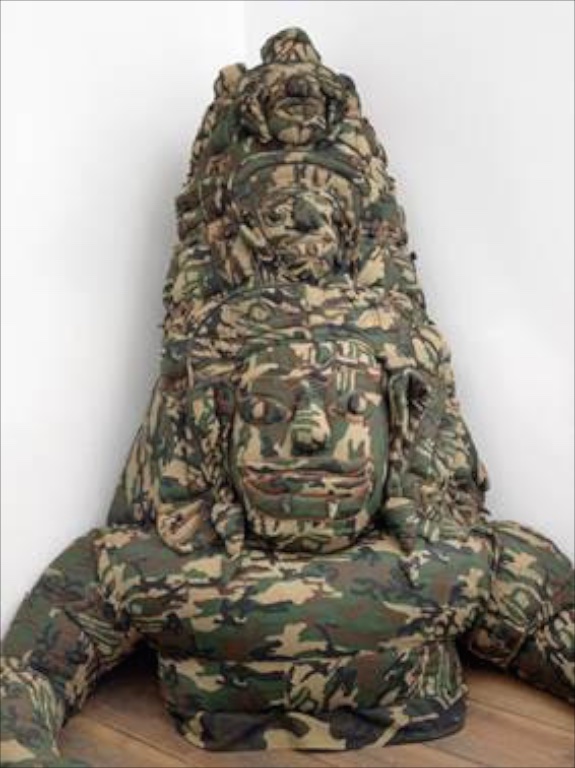
Svay Sareth, “Ruins (Asura Tower)”, cotton, 175 × 134 × 75 cm, 2014 (image courtesy ARNDT and the artist; Photo: Bernd Borchardt)
Most arresting are the soft totem poles of heads by Svay Sareth covered in camouflage cloth. The son of a military family, Sareth grew up in refugee camps on the boarder of Cambodia. The works made me think of the crucial scene in Salman Rushdie’s Midnight’s Children, where the hero, Saleem, comes across a battlefield and then the piled heads of his childhood friends who talk with him about their plight. The scene is horrific and comic, and hence all the more horrific.
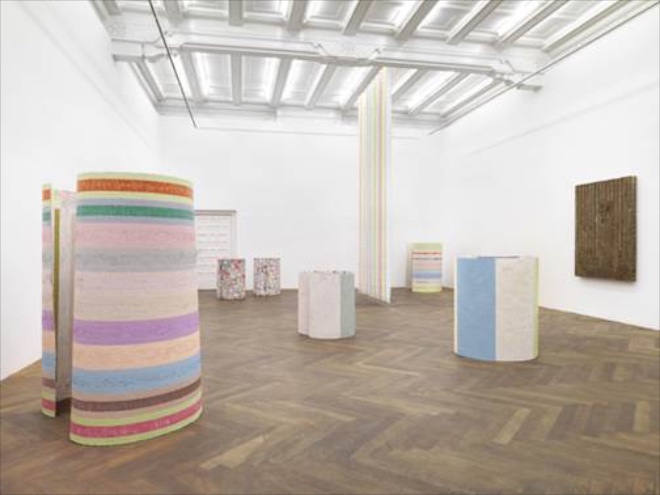
Installation view: “Traitor and Tradition”, ARNDT Berlin 2014 (image courtesy ARNDT and the artists; Photo: Bernd Borchardt)
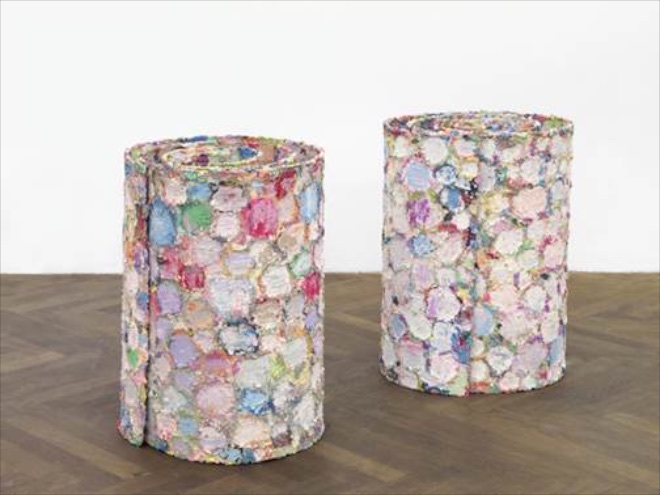
Mit Jai Inn, “Untitled (scrolls) 1″, oil on canvas, two-sided, 87 x 565 cm, 2014 (image courtesy ARNDT and the artists; photo: Bernd Borchardt)
Mit Jai Inn’s thick impasto double-sided paintings on canvas, hung from the ceiling and as freestanding sculptural curls, force their way into the viewer’s presence. The curls hide their cores like shells, while the “tapestries” present a flip-side dichotomy that defies instant perspectival gratification. These are paintings which cover their traces and cannot be beheld—reduced—in one go; physical abstractions impinging on real space. As Gleeson writes in the exhibition text “[the artist’s] primary dedication is to a materiality that refuses representation, definition, or stability.”
Pinaree Sanitak’s sculptural works invoke metal seeds and cells communicating and tied to one another by trailing, delicate filaments. They are at once hard, defensive organisms and empty shells—surviving by threads. But surviving. This is the heart of the show. Gleeson again: “The artists’ individual traditions confirm something chosen, rather than imposed.” Tradition is subjective and even traitors have one. And sometimes traitors turn out to be heroes.

